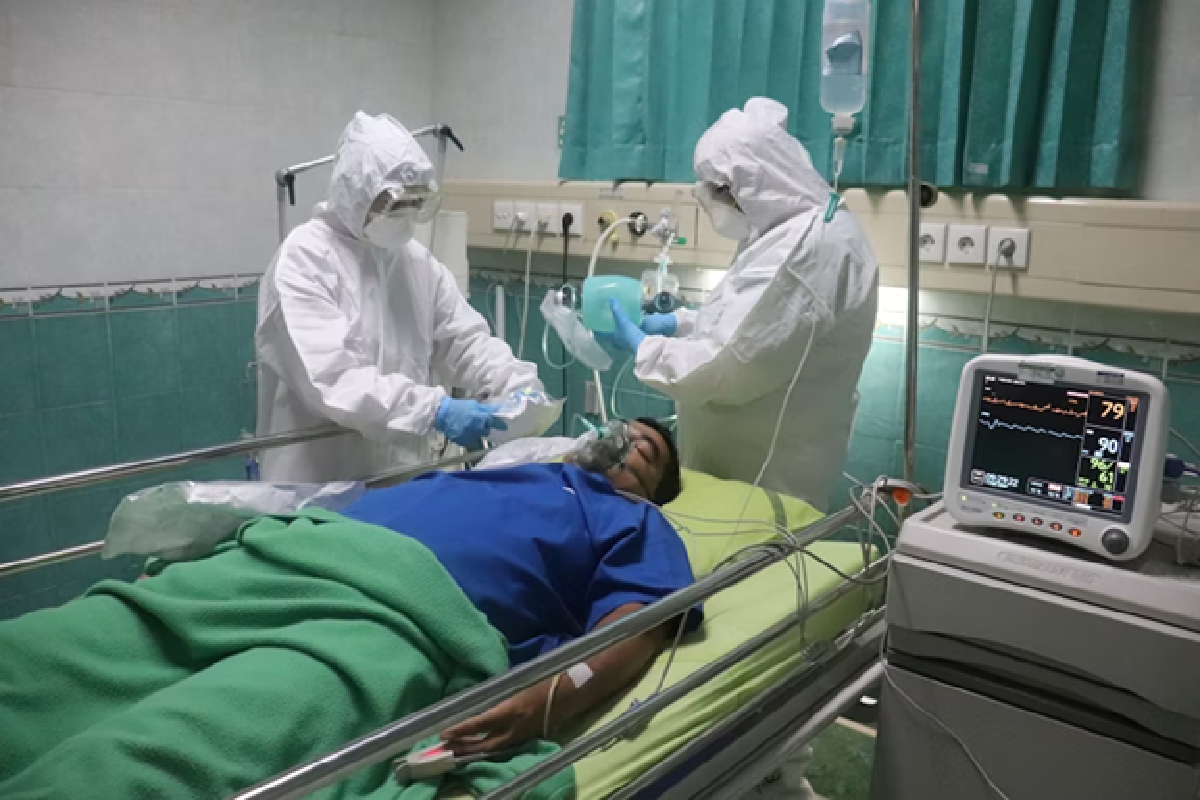Contents of this Post
ToggleDid you know that medical errors result in 250,000 deaths each year in the United States?
Seriously…
It’s not a mistake in the numbers. Medical malpractice is now the third leading cause of death in the United States, trailing only heart disease and cancer. And what makes this so scary is that…
Most patients have no idea what medical malpractice is, or when they have a valid claim for damages.
The good news?
Knowing the key elements of medical malpractice will help you to protect yourself and your loved ones from unnecessary injury and suffering. If and when medical treatment goes wrong, it’s critical that you know your rights, when to seek comprehensive legal help from a qualified medical malpractice law firm to get the compensation you deserve.
In this post, we break down what you need to know about medical malpractice in a simple way. Here’s what we cover:
- What Defines Medical Malpractice
- The Four Essential Elements of a Valid Claim
- Common Types of Medical Errors
- When to Contact a Medical Malpractice Law Firm
- How to Protect Your Legal Rights
What Is Medical Malpractice: The Basics
Medical malpractice occurs when a health care provider negligently causes harm to a patient.
But wait…
It’s important to note that not all bad outcomes are malpractice. There is a difference between an unexpected result and medical negligence. Sometimes treatments simply fail, even if a doctor did everything correctly.
In general, medical malpractice occurs when a doctor or health care provider fails to use the degree of care and skill that another provider with ordinary training and experience in that medical specialty would use under the same or similar circumstances.
This ‘standard of care’ is what distinguishes reasonable medical treatment from malpractice.
The 4 Elements of a Medical Malpractice Claim
Ok, so you want to know the key things that make a medical malpractice case valid?
There are 4 elements that must be present. If even one is missing, your case has no merit and a court will throw it out. The 4 elements are:
A Doctor-Patient Relationship Existed
You must prove that you hired the doctor, and they agreed to treat you. This creates a legal obligation that the doctor has a duty of care to you.
The Doctor Was Negligent
Ah, the tricky part. You must prove that your doctor failed to use reasonable care and skill when treating you. The doctor must have departed from the acceptable standard of practice for their medical specialty.
The Negligence Caused Your Injury
This is critical. You must show that the doctor’s negligence directly led to your injury. If you would have suffered the same outcome, even with proper care, you do not have a claim.
The Injury Led to Specific Damages
Ok, so the last thing you must prove is actual harm. This means you suffered real damages like medical bills, lost income, pain and suffering, or disability. Without provable damages, there is no claim.
Common Types of Medical Errors That Happen
Ok, you might not know this, but…
32% of all medical malpractice cases involve a misdiagnosis or delayed diagnosis. That’s 1 in 3 cases!
Here are the most common forms of medical malpractice:
Misdiagnosis and Delayed Diagnosis
Medical misdiagnosis happens when doctors fail to correctly identify a patient’s condition, or take too long to reach a diagnosis. The effects can be fatal.
Cancer, infections, and cardiovascular diseases are the top three conditions most commonly misdiagnosed by doctors.
Misdiagnosis can turn a treatable medical condition into a deadly one. By the time a correct diagnosis is reached, the opportunity for successful treatment may have passed.
Surgical Errors
Surgery is never without risk. But some errors are inexcusable. These include:
- Performing surgery on the wrong body part
- Leaving surgical instruments inside patients
- Operating on the wrong patient
- Damaging nerves or organs while operating
- Performing the incorrect procedure
These so-called ‘Never Events’ should never happen. But they do.
Medication Errors
Prescription mistakes can kill. Doctors and pharmacies can:
- Prescribe the wrong medication
- Administer incorrect dosages
- Fail to look up dangerous drug interactions
- Administer medications improperly
Birth Injuries
Errors during labor and delivery can cause permanent disability for babies. Improper use of delivery tools, failing to recognize fetal distress, and not performing emergency C-sections on time can have tragic consequences.
When to Contact a Medical Malpractice Law Firm
Ok, this may surprise you…
You do not have forever to file a medical malpractice claim. Every state sets a time limit, called a statute of limitations. If you wait too long, you lose your right to sue.
You should contact a medical malpractice law firm immediately if:
- Your condition has worsened after treatment
- You have received a different diagnosis from another doctor
- Your doctor failed to order necessary tests
- You have suffered complications that were not fully explained as risks
- Your treatment deviated significantly from standard practice
Here’s something else you should know…
Most medical malpractice law firms offer free consultations. If you suspect malpractice, it’s a no-risk call to see if you have a case. An experienced attorney can evaluate your situation quickly and tell you if you have a valid claim.
Reality Check: Medical Malpractice Cases
Ok, here’s something interesting…
Despite one in five people in the United States experiencing medical malpractice in their lifetime, the number of cases filed is a tiny fraction of the total. Why? Because most victims don’t recognize what happened to them as malpractice.
The data shows that in 2023, there were only 11,440 reported medical malpractice claims across the United States. Compare that to 250,000 annual deaths due to medical errors and you see a massive gap.
Many victims just don’t know their rights, and most are too intimidated to go up against the medical system.
What Happens When You File a Medical Malpractice Claim?
Ok, let me explain…
Investigation and Case Review
The law firm will obtain all your medical records and have them reviewed by medical experts. These experts will opine whether the standard of care was breached.
Filing the Lawsuit
Once the case is found to have merit, your attorney files a formal complaint with the court. This kicks off the legal process.
Discovery Phase
Both sides exchange information, depose witnesses and build their cases. This is the bulk of the legal work.
Settlement Negotiations
Most cases settle before trial. In fact, over 96% of medical malpractice claims settle. The law firm will negotiate to get you fair compensation.
Trial (If Necessary)
If settlement talks fail, the case goes to trial. A judge or jury then decides if malpractice occurred and what damages are due.
How To Protect Your Rights In Medical Malpractice Cases
Ok, you must do the following:
Keep good records of all your medical care. Retain all documents, bills and communications from medical providers. Take notes on your symptoms, treatments received and conversations with doctors.
Never sign anything from the hospital or your insurance company without lawyer review first. These may contain clauses that waive your right to sue.
Get a second opinion if something doesn’t feel right. Trust your instincts. You know your body better than anyone else.
Choosing The Right Lawyer
Ok, not all lawyers handle medical malpractice cases. These cases are complex and need special medical and legal knowledge.
Look for a medical malpractice law firm with:
- Track record of handling medical malpractice cases
- Access to medical experts
- Resources to stand up to large hospitals and insurance companies
- Experience in your type of case
The right lawyer can make all the difference in your case.
The Key Points You Need To Remember
Medical malpractice is no joke. With hundreds of thousands of Americans dying each year due to medical errors, being able to identify medical malpractice is not optional – it’s critical to your well being.
Key things to remember:
- Medical malpractice has 4 elements that must be proven
- Time limits are strict, so you must act fast
- Most cases are settled without going to trial
- Free consultations are available from medical malpractice law firms
- Specialized legal help is needed for medical malpractice cases
Don’t let medical negligence go unpunished. If you or a loved one has been injured by substandard medical care, reach out to a qualified medical malpractice law firm today. They can review your case and help you understand your options.
Your health and legal rights are worth fighting for.

